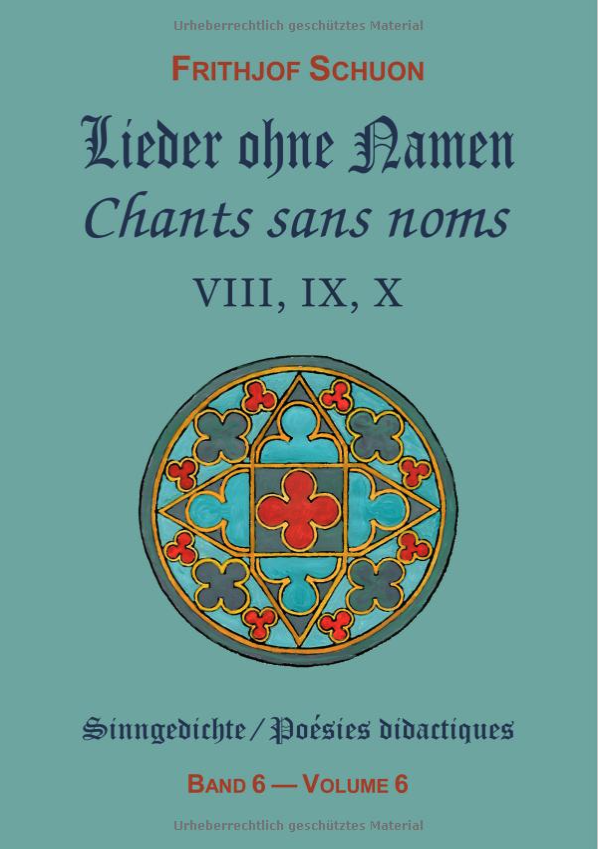
Frithjof Schuon Archive

Briefe
| Titel | Zusammenfassung | Publication Data | Dated |
|---|---|---|---|
| Extract from a letter from Frithjof Schuon | Regarding the question of transubstantiation, which I address briefly in Logic and Transcendence, the Oriental character of the words in question can be seen in their use of ellipsis: Christ did not say, “I am like a vine, like a door”, but he said, “I am the vine, the door”; likewise he did not say, “This conveys divine power in the same way my body conveys divine power”, but he said, “This is my body”. | Logic & Transc. p.237 | 02/01/1976 |
| Extract from a letter from Frithjof Schuon | One should not reproach a science for not being what it does not want to be or for not providing what it does not want to provide. In this respect one should not criticize modern chemistry insofar as it studies the phenomena it intends to study, for on its limited plane it remains within adequation and is not exceeding its strengths; nor can one blame it for remaining within the strictly human perspective in relation to matter, for it need not go beyond this point, and indeed no physical science needs to do so. | Logic & Transc. p.235 | 06/22/1964 |
Featured Books
Featured Poems
Adastra and Stella Maris: Poems by Frithjof Schuon-Certitude
O beata solitudo, A saint once said. O beata certitudo,
Adastra and Stella Maris: Poems by Frithjof Schuon-Sewing
Thou mayest tell thyself: if I were naught,
Adastra and Stella Maris: Poems by Frithjof Schuon-The Ray
A dream-web in a thousand webs of dreams,
Featured Articles
Introduction to “Frithjof Schuon: Messenger of the Perennial Philosophy”
The “Introduction” to Frithjof Schuon: Messenger of the Perennial Philosophy covers a summary of the three dimensions of Schuon’s work (comprehension, concentration, conformation), a brief discussion of how his own life was led in the light of these dimensions, and then presents the essential elements of Schuon’s message in some further details. These elements are discussed under sections titles “Metaphysical Truth,” “Life of Prayer,” and “Moral Conformity.” Besides Fitzgerald’s explication, his points are reinforced by extensive quotes from Schuon’s unique prose, and his poetry.
Thoughts on Reading Frithjof Schuon’s Writings on Art
Frithjof Schuon and the American Indian Spirit: Interview with Michael Fitzgerald
It is generally recognized that Frithjof Schuon had a special interest in the spiritual traditions of the American Indians, but only some aspects of his relationship with them are well known. The online journal Vincit Omnia Veritas, which published six issues between 2005 and 2007, interviewed Michael Fitzgerald on the subject of Schuon’s many decades of interest in, and study of, American Indian spirituality in its many dimensions. This interview, posted on the Religio Perennis website, remains one of the most in-depth explications of Schuon’s frequent focus on many aspects of American Indian traditions. Fitzgerald also gives some important historical context to the life and times of Schuon, to his American Indian contacts and friends, and to the work of Joseph Epes Brown, a scholar of Indian Studies and a friend to both Black Elk and Schuon.
